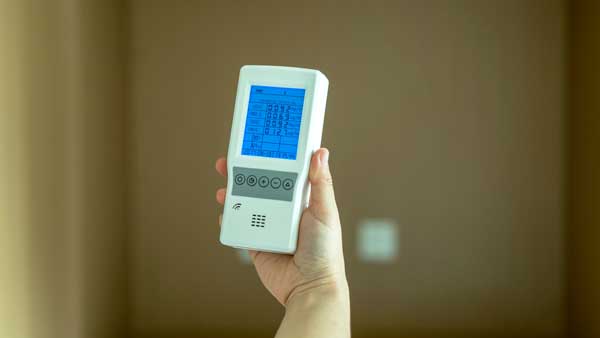
Posted: March 14, 2022 at 9:20 am
By: Lakes Region HVAC
Indoor air quality is usually more of a concern for those who suffer from asthma or allergies. With air pollutants being 2-5 times higher indoors than outdoors, and the health risks associated with breathing in unhealthy air for extended periods of time, indoor air quality should be on every homeowners radar. One of the best ways to get started is by having your air quality tested.
Air quality tests will assess the levels of both irritants and pollutants by using three different types of tests. A professional air quality test will include:
This test evaluates the levels of irritants such as pollen, mold, dust mites, bacteria, and dander. Irritants such as these flow through vents and ductwork, and eventually, there can be a buildup. In the process of testing for biological irritants, you may also find mold in hidden places like behind the walls. While we hope this isn't the case, it's better to know where and what you have to clean, which can only be found by having your air quality tested professionally. As you know, black mold is terrible for your health. Other irritants can cause difficulty breathing also, especially for those who struggle with asthma or other respiratory conditions.
This test will measure the levels of compounds like Radon, formaldehyde, and lead. As you're probably aware, these pollutants are incredibly harmful to one's health. Effects from exposure include irritation to the eyes, nose, and throat; headaches and the loss of coordination; nausea; and damage to the liver, kidneys, or central nervous system. The above noted compounds can hide or sneak in through holes, cracks, and pores in the foundation of a home, making a professional test essential. Additionally, an occasional at-home test can be helpful if you want to check the levels of these compounds more regularly for extra safety.
This is probably the most important of the three tests. Carbon monoxide, also known as the “silent killer”, is the most common and dangerous of combustion pollutants. Even a small amount is unsafe as this is a poison and a dangerous fire hazard. Other pollutants of this variety include nitrogen dioxide, fine and ultrafine particles, polycyclic aromatic hydrocarbons, and formaldehyde. All of the above are better left in a chemistry set than in your home's air.

At Lake's Region we make your health, safety, and comfort our priority.
You can read more about the importance of indoor air quality in our blog here.
If this article is useful to you, or if you know someone who can benefit from it, please Share it.
Have another question? Contact the Lakes Region team, and we’ll find your solution.
Our clients are homeowners, small business owners, and corporations—and one could be you by calling 603-286-2290 or emailing info@lrhvac.com.
Lakes Region’s expert service technicians and installers are trained in the latest advancements in heating and cooling technologies. We'll help you select the correct comfort system for your home, ensuring that your equipment operates at the highest efficiency — giving you the lowest monthly operating cost.
Visit our website.
LRHVAC’s office hours: Monday - Friday
7:30-4:30
Phone: 603-286-2290
Mail: 86 Bay Hill Rd., Northfield, NH 03276
Email:
Email us